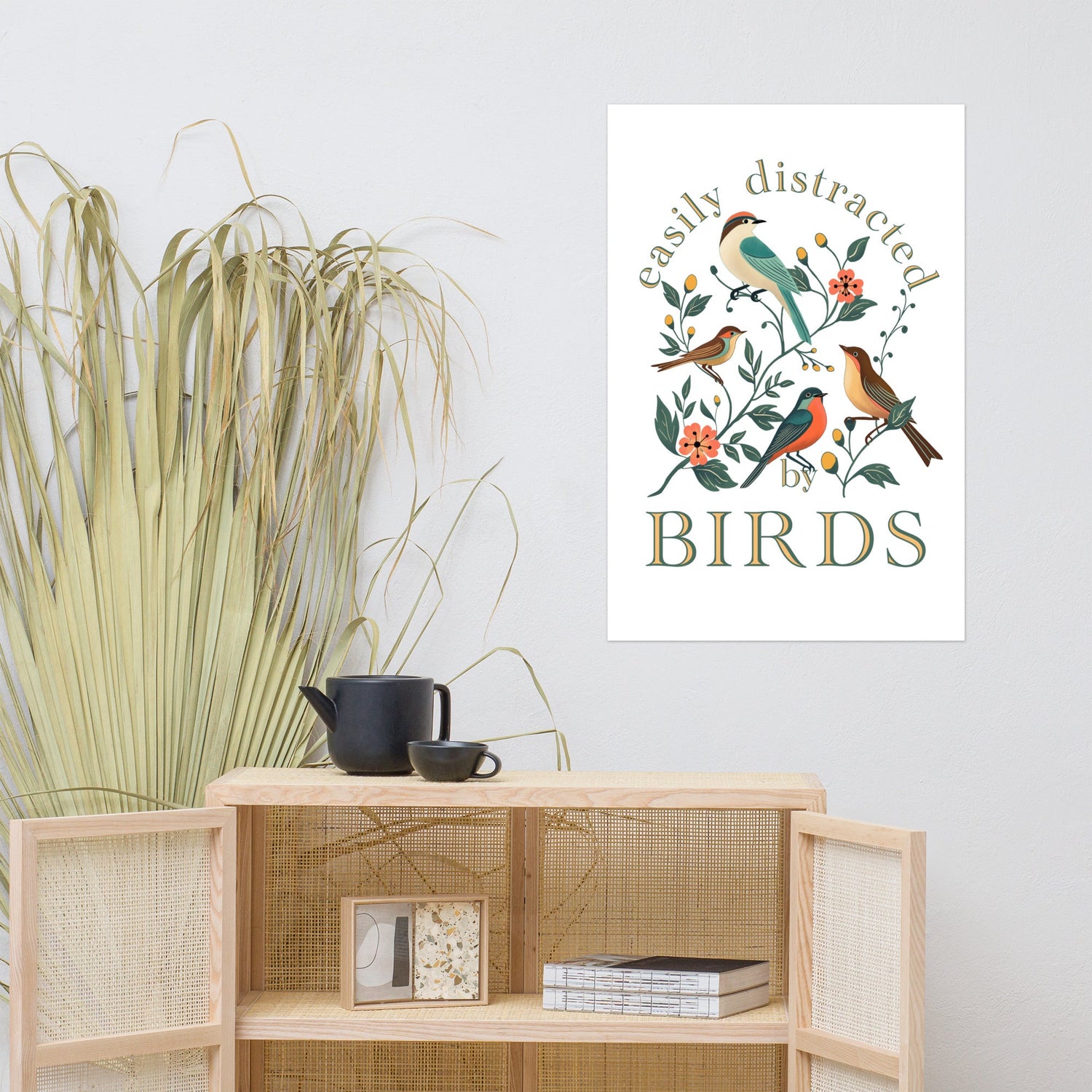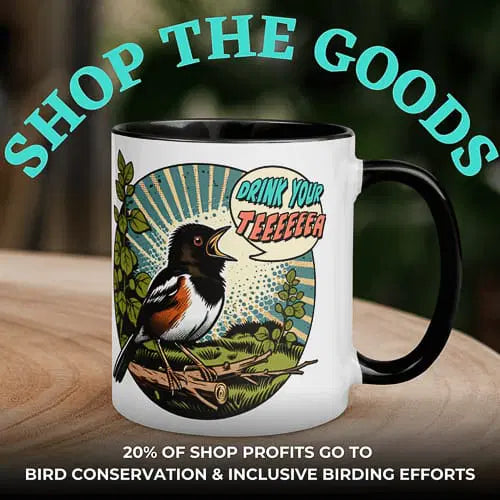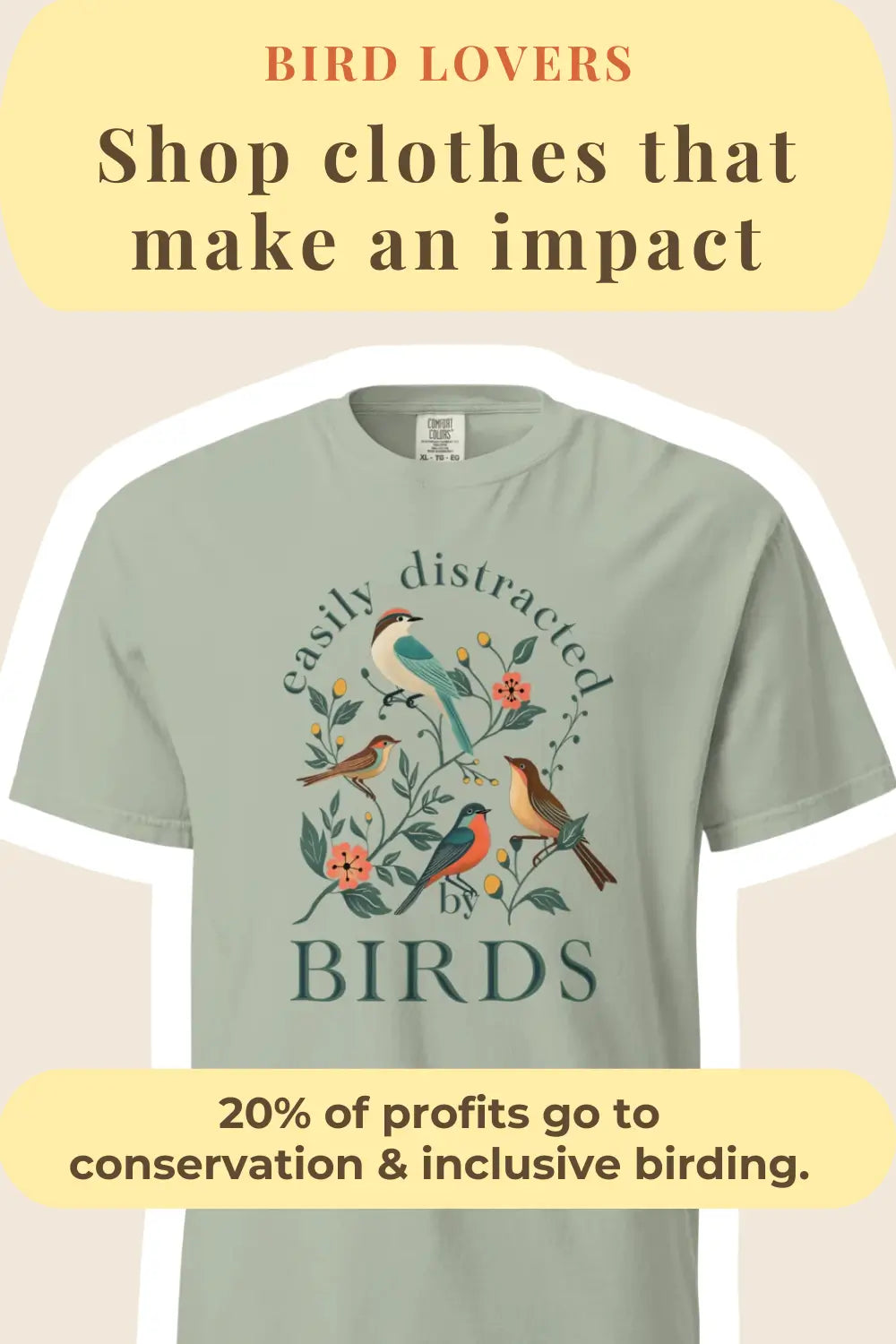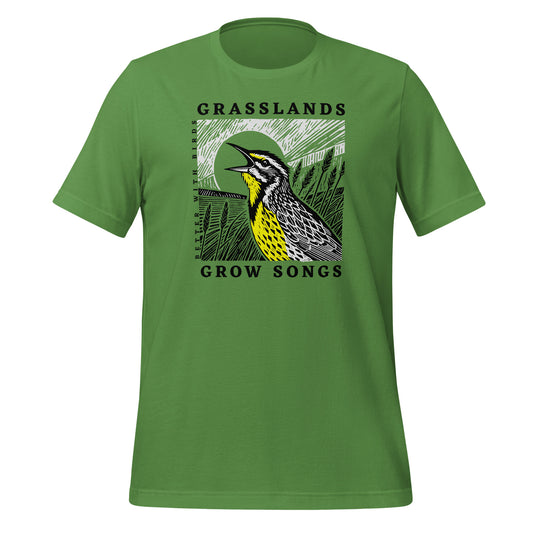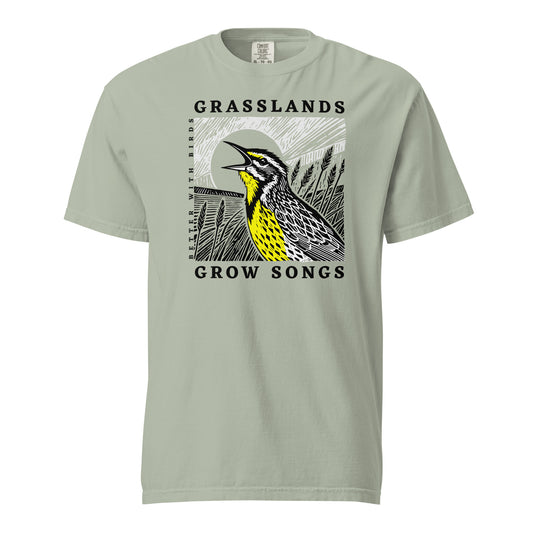How to Keep a Bird List: Your Guide to Birdwatching Records
Photos by Jaymi Heimbuch
Read Time: 11 minutes
Bird Identification , Journaling , Tips & Advice
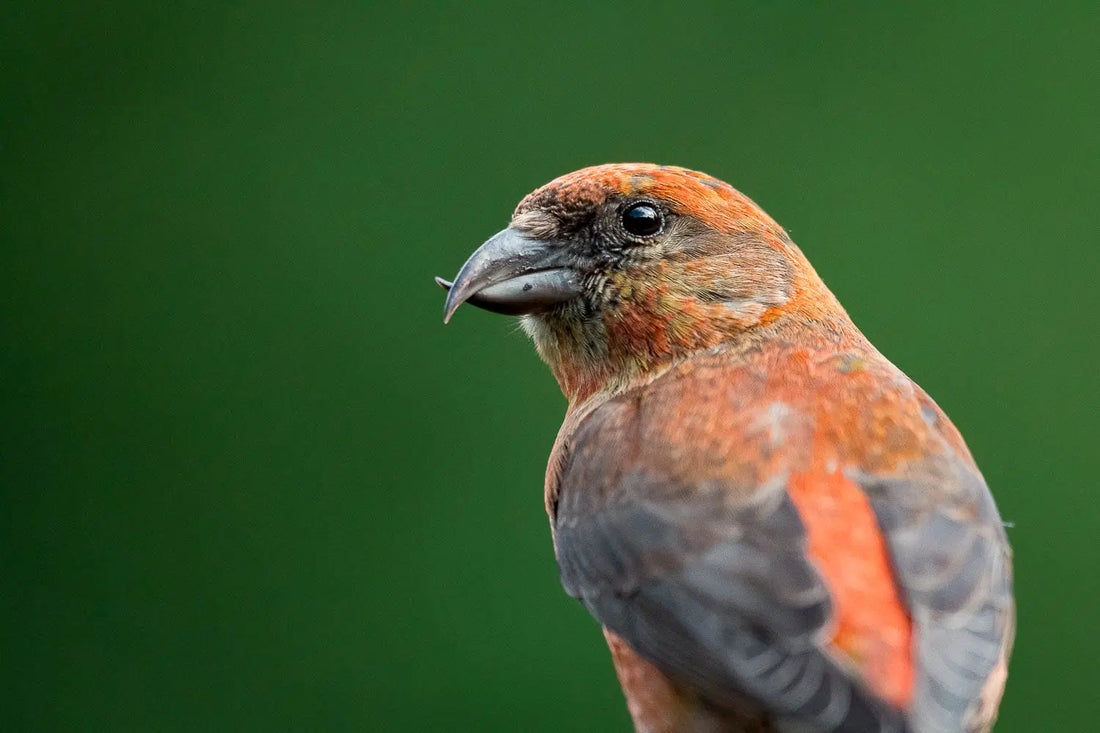
This post contains affiliate links. If you use these links to buy something, we may earn a commission at no additional cost to you. We only recommend products we fully support or use ourselves. Our full disclaimer
PIN THIS FOR LATER
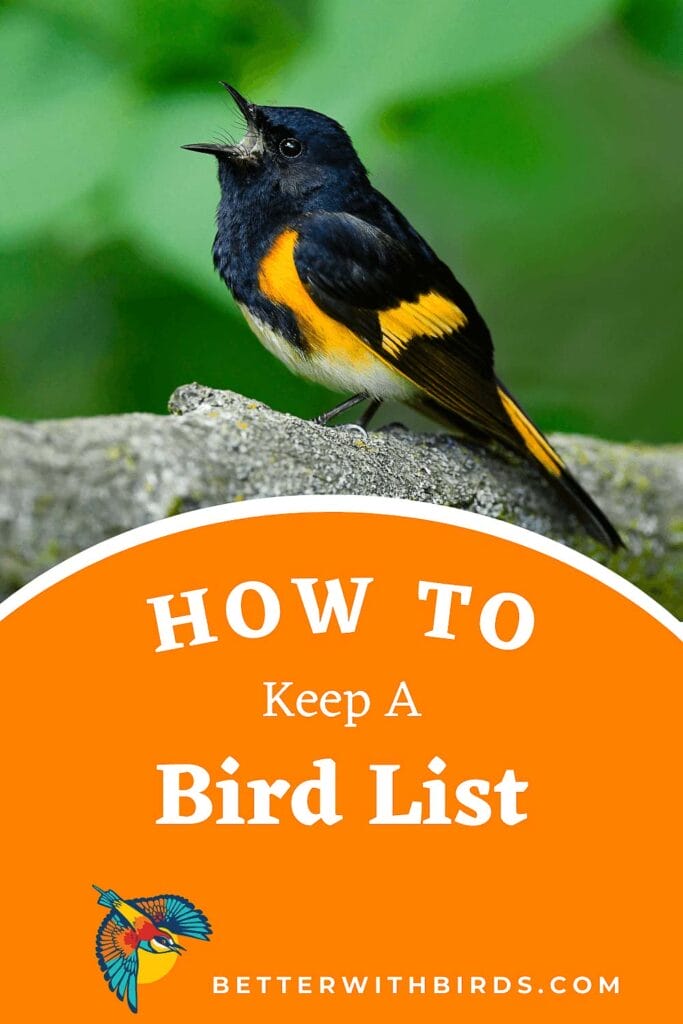
Contents
It’s the perfect way to keep track not only of the new species you spy, but also the memories you make as you explore the birds living around you.
In this handy guide, we unpack the essentials of crafting a well-maintained bird list that’ll set you on the path to becoming a full-fledged birder.

Watching birds is sheer joy, and so too is going back through your list and reliving the memories of what you saw, when and where – like this North Island robin (Toutouwai) spotted on a walk in New Zealand.
Why keep a bird list?
Bird lists serve as personal archives that allow birdwatchers to keep track of all their bird sightings over time and foster familiarity with local species. As bird watchers, we’re not just noting down the bird species we’ve seen; we’re building our life list, a unique collection of our bird-watching experiences.
Every time we add a new bird to our list, it’s a chance for a mini-celebration, a nod to the stunning diversity of birds and the thrill of spotting them in their natural haunts.
But hey, scribbling down names in our notebooks or updating an eBird checklist isn’t just about tallying scores.
It’s bigger than us!
Each note we make can also contribute to citizen science, offering up juicy data nuggets on bird population trends and habitat shifts.
This info is gold for researchers and conservationists.
By keeping lists of the birds we’ve observed, we can provide valuable information on bird population trends, range expansions, and contractions.
This data supports scientific research and conservation efforts, helping to protect our wild birds for generations to come.
So, every time you jot down a sighting, remember, you’re helping to sketch the bigger picture of our avian allies’ lives. Pretty tweet, right?

Oh, we do love a good notebook! We have a whole range of cover designs in the shop!
Choosing the right format for your bird list
Deciding how to keep your bird list is as important as the sightings you record. From traditional notebooks to digital spreadsheets and innovative mobile apps, there’s a format that suits every birder.
Whether you’re a beginner starting with your first field guide or an experienced birder with an extensive database, the right format can make all the difference.
Physical Notebooks
For many birdwatchers, their birding journey begins with a simple paper notebook. It’s a classic, time-tested approach that offers practicality and an intimate connection with the observation process.
There’s something profoundly satisfying about jotting down a bird sighting by hand, capturing the moment in ink on the page.
Even without a birding guide, a notebook and pen can serve as a reliable tool to document detailed observations and physical descriptions of birds seen in the wild.
You can note down:
- the bird’s size
- shape
- color pattern
- behavior
You can even sketch it if you’re artistically inclined. Plus, a notebook offers plenty of space for personal reflections and memories attached to each sighting.
For those who prefer a tactile experience over typing on a computer, a physical notebook is the perfect course to chart your birdwatching journey.
Here are a few we suggest:
|
|
|
|
|
Digital Spreadsheets
If you’re a tech-savvy birder or love to crunch numbers, digital spreadsheets might be your go-to format. Spreadsheets offer organization, sorting, and customization options that make managing your bird list a breeze.
With digital spreadsheets, your bird list is always at your fingertips, ready to be accessed from any location with internet connectivity, thanks to cloud services such as Dropbox.
You can sort data based on different criteria such as taxonomic order or sighting date, effectively functioning as your personal bird database.
Excel and other similar platforms allow you to customize your bird lists by adding custom fields for additional information like GPS coordinates or sub-species details, providing greater flexibility in how you maintain your records.
Plus, with automated backups, you never have to worry about losing your precious data.
Mobile Apps
For birders on the go, mobile apps are the wings that keep their bird list soaring.
Platforms like eBird and Merlin Bird ID have revolutionized the way we maintain and share our life lists. With a few taps on your smartphone, you can record a sighting, consult a field guide, or share your observations with a global birdwatching community.
Bird sightings saved using the Merlin Bird app are added to a special Life List in the app. Or you’re given the option to record your sightings and newly ID’ed birds on eBird.
eBird, in particular, is a treasure trove for birdwatchers. These sightings are added to the eBird community, making it easier for birders to share their observations and for scientists to access birdwatching data.
The app even encourages detailed documentation for bird sightings, particularly for reports filtered as unusual, to ensure the integrity and accuracy of the data submitted.
So, whether you’re a casual birder or an avid lister, the eBird and Merlin apps are the perfect pair to have your bird list covered.

When you jot down the species you’ve sited, be sure to add in the essentials like date and location – plus other helpful details are fun, like noting that this yellow warbler was foraging for food.
Essential information to record
Now that we’ve chosen our format, what information should we record in our bird list? The heart of every bird list consists of three key data points:
- species name
- date
- location of the sighting
These are the fundamental details that give each entry in your bird list its unique identity.
But don’t stop there! Additional notes or observations can greatly enhance the detail and usefulness of your bird list. Here are some things to consider jotting down:
- Time of Day: Was it during the early morning chorus or a dusky evening?
- Weather Conditions: Sunny, overcast, raining? It all influences bird behavior.
- Behavior Observed: Was the bird feeding, nesting, singing, or perhaps doing a fascinating mating dance?
- Plumage Details: Any unique or seasonal coloration that stood out?
- Associates: Was the bird alone or part of a flock? Any interspecies interactions?
- Sounds Made: Did it have a distinctive call or song you could try to describe or record?
- Habitat Details: Noting the surroundings—dense forest, wetlands, urban park, etc.
- Feeding Behavior: What was the bird eating? Any particular way it was foraging?
- Flight Pattern: Did it exhibit any notable flight characteristics like hovering, gliding, or rapid flapping?
- Conservation Status: Is the species considered rare, endangered, or common in the area?
- Personal Impressions: How did spotting this bird make you feel? Any personal anecdotes related to the sighting?
These little details can provide rich context to your sightings and make revisiting your list a joy.
Whether you’re making notes directly in your field guide or adding extra fields in your digital spreadsheet, remember, the more details you record, the more vibrant your bird list becomes.

A greater yellowlegs was a fun sighting at a favorite patch. Organizing a bird list by location can be helpful for unveiling patterns and species distributions.
We give 20% of all shop profits to bird conservation & inclusive birding efforts.
Organizing your bird list
With your bird sightings diligently recorded, it’s time to bring some order to your bird list.
Organizing your list is not just about neatness – it’s about making your data more meaningful.
By sorting your sightings by location, date, or species, you can extract valuable insights from your bird list and make it a powerful tool for understanding bird behavior and distributions.
Let’s take a closer look at these organization methods and how they can enhance your birding experience.
By Location
Organizing your bird list by location is like creating a geographical diary of your birdwatching journey. From your own backyard to the farthest reaches of the world, each location holds a unique collection of bird species, waiting to be discovered and recorded.
Don’t forget to explore your local county list for bird species that can be found right in your own yard.
Entries in a bird life list organized by location should precisely correspond to single locations and calendar dates to aid in understanding bird distributions.
This meticulous record-keeping can reveal patterns in bird distributions and help identify areas rich in bird diversity.
Whether you’re annotating a guidebook, tailoring a spreadsheet, or using an app like eBird, organizing your list by location brings your birdwatching journey to life, one place at a time.
By Date
Organizing your bird list by multiple dates is like stepping into a time machine. As you flip through the pages or scroll through the entries, you can revisit past sightings and recall the thrill of each discovery.
Entries in chronological order allow you to observe the frequency of sightings over a period, aiding in spotting trends.
Did you spot a particular species more often in the spring? Or did a rare bird make an appearance only once last year?
Recording the time and date of bird observations helps you recognize migratory patterns and changes in bird populations with seasons.
It’s like having a bird calendar, marking the passage of time with feathers and songs.
By Species
Organizing your bird list by species is akin to assembling a bird encyclopedia. It’s a systematic approach that allows you to catalog your sightings based on the taxonomic order of species, thus transforming your list into a comprehensive reference tool.
Color-coding and using different font styles can help you quickly identify family changes and highlight which species are introduced or rare.
It’s also a great way to track your progress in spotting different species and gives you a sense of accomplishment each time you add a new entry.
So, whether it’s the familiar robin in your yard or the exotic toucan from your tropical adventure, every bird earns a special spot in your species-organized list of all the birds you have seen, each representing one species.

Sorry, but “Little Brown Job” isn’t an official bird species, so you’re going to have to dig into your species ID skills, even when it comes to tough groups like sparrows (though, the white-crowned sparrow is a pretty easy one).
Tips for accurate identification
As we dive deeper into our birdwatching journey, accurately identifying birds becomes crucial.
You only want to add a species to your list if you’ve been able to positively ID it.
But with thousands of bird species out there, how do we tell one from the other? We’ve got some tips!
Begin with the basics:
- Size & shape
- Color pattern
- Behavior
- Habitat
Can you group the bird into a general category like a sparrow or a hawk?
What colors stand out?
Is it flitting about energetically or perched serenely?
Is it in a forest or near a body of water?
Noting these basic traits can narrow down your options and guide you towards the right identification.
Once you’ve got the basics down, focus on specific plumage details or field marks like wingbars or eyerings.
Regular practice and guided birdwatching expeditions can further enhance your identification skills and open the door to new discoveries.
And of course, the Merlin Bird ID app is incredibly helpful for figuring out which species you’re seeing or hearing. It’s a must-have helper when you’re out in the field and don’t have your field guide with you.

Bring your bird list alive by adding photos and sound recordings. Then you get to see and hear that marsh wren you spotted again and again.
Documenting your sightings
While noting down the name and location of a bird sighting is essential, documenting your sightings can take your bird list to the next level.
It’s like adding color to a sketch, transforming your list into a vivid tableau of your birdwatching experiences.
Documentation can include:
- Comments
- Photographs
- Sound recordings
- Videos
These provide evidence to support the identification of unusual or unexpected observations.
Even a blurry photo or a faint audio recording can conclusively establish a bird’s identification and contribute to scientific archives.
Moreover, a detailed written description can complement physical evidence and can enhance your identification skills.
So, the next time you spot a bird, don’t just mark it off your list. Document it, and immortalize your sighting.

Growing your bird list means traveling beyond the backyard. And hoooooboy it’s exciting to see a new species for the first time, like when I saw my first long-tailed manakin on a walk in Costa Rica.
Expanding your bird list
As your bird list grows, so does your desire to see more. Adding new species to your list is like collecting badges of honor, a testament to your adventures and discoveries.
But how do you make sure your bird list keeps growing?
Traveling to new locations and joining birdwatching tours can present unique opportunities to see birds not commonly found in your local region.
Visiting countries and habitats that are home to a large number of species can significantly increase the count of your life list. Scouting for similar environments where rare or endemic birds have been spotted can lead to remarkable additions to your list.
So, strap on your binoculars, pack your field guide, and set off on your next birdwatching adventure!

Let others vicariously enjoy your birding adventures by sharing your bird list.
Sharing your bird list
Platforms like eBird provide a space for birdwatchers to share their observations and experiences, fostering a sense of community and camaraderie. Joining a birding group can enhance the sense of safety and belonging while sharing bird lists.
So, don’t keep your bird list to yourself. Share it, celebrate it, and let your love for birdwatching take flight!

There are many meaningful milestones you can hit, and keeping a bird list helps you remember to celebrate them (like seeing your first black-footed albatross courtship dance!).
Keeping track of personal milestones
As you journey through the world of birdwatching, there will be moments that stand out, moments that deserve to be celebrated.
Maybe it’s the sighting of a life-bird, a species you’ve never seen before, or maybe it’s spotting a milestone number like 10,000 different species.
These are your personal milestones, the high points of your birdwatching journey.
Recording these milestones not only provides individual satisfaction but also leads to recognition within the birdwatching community, sometimes igniting friendly competition among birders.
Mobile apps such as eBird are instrumental in keeping track of these milestones and producing summaries of your lists, making it easier to relive these precious moments.
So, celebrate each milestone, for they are the feathers in your birdwatching cap!

Everyone has their own ways of staying excited about tracking their sightings. Find what works best for you and your unique personality.
Staying motivated and engaged
With your bird list taking shape, it’s important to stay motivated and engaged. Birdwatching is a journey, not a destination, and the joy lies in each moment of discovery, each addition to your list.
Joining a local birdwatching group can provide valuable knowledge, support, and motivation.
Participating in citizen science projects can give your birdwatching a sense of purpose and contribution, making each sighting count towards important research efforts.
Setting goals and challenges can keep the thrill alive and keep you on your toes.
Here are some ideas:
- Try to spot a certain number of new species in a month
- Keep a birdwatching journal and record your observations
- Learn to identify bird songs and calls
- Explore different habitats and ecosystems to see a variety of bird species
Every bird you spot, every note you jot down, is a step forward in your incredible birdwatching journey and contributes to the number of birds observed. So staying motivated is important. Find your best strategies with time and testing.
Bird lists are not just checklists of names; they’re personal archives, scientific contributions, and sources of boundless joy.
Keeping a bird list is a commitment, a promise to ourselves and to the birds we love.
It’s a promise to observe, to learn, and to protect.
So, grab your binoculars, open your notebook or app, and let’s get birding!
